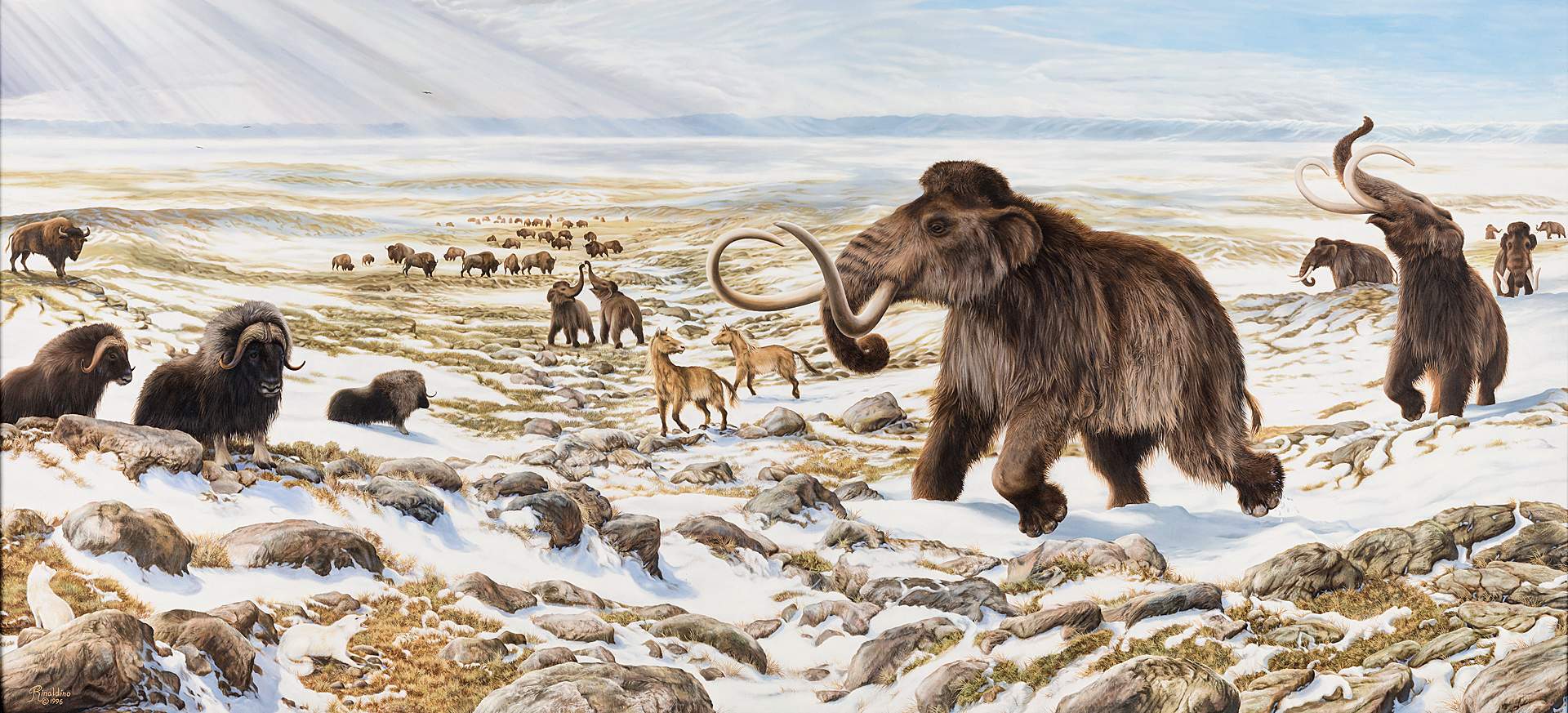
The Ice Age, also known as the Pleistocene epoch, was a fascinating period in Earth’s history characterized by a drastic drop in temperature and the emergence of sprawling glaciers. This icy landscape was home to a diverse range of unique and fascinating animals. From fearsome predators to massive herbivores, the Ice Age animals captivate our imagination and provide valuable insights into the ancient world.
In this article, we will delve into 10 intriguing facts about the animals that roamed the icy terrains during this extraordinary era. Join us as we explore the lives and adaptations of these incredible creatures, from the mighty mammoths to the ferocious saber-toothed cats. So, let’s embark on a journey back in time to discover more about these fascinating Ice Age animals!
Key Takeaways:
- Ice Age animals like the Woolly Mammoth and Saber-toothed Tiger were massive and had unique adaptations to survive in the harsh cold climate.
- These incredible creatures, from the Giant Sloth to the Cave Lion, roamed the Earth during the Ice Age and eventually went extinct, leaving behind a fascinating legacy.
The Woolly Mammoth was one of the largest mammals during the Ice Age.
The Woolly Mammoth, a distant relative of today’s elephants, roamed the Earth during the Ice Age. These colossal creatures stood up to 11 feet tall at the shoulder and could weigh up to 6 tons. Their long, curved tusks could reach a length of up to 16 feet. These giants grazed on grasses and other vegetation, and their thick fur and hump of fat helped them survive the harsh cold temperatures. The Woolly Mammoth went extinct around 4,000 years ago.
Saber-toothed Tigers had enormous, sharp teeth.
The Saber-toothed Tiger, also known as the Smilodon, was not actually a tiger but a prehistoric predator. It had saber-like canines that could grow up to 7 inches long. These elongated teeth were used to pierce the flesh of their prey. Saber-toothed Tigers were around the same size as modern African lions, with a muscular build and short tail. They lived in North and South America during the Ice Age and became extinct about 10,000 years ago.
The Giant Sloth was a slow-moving creature.
The Giant Sloth was one of the largest ground-dwelling mammals of the Ice Age. Despite its sluggish nature, it had strong limbs and sharp claws that it used for defense and climbing trees. This herbivorous animal could reach lengths of up to 20 feet and weigh up to 4 tons. It had a distinctive appearance with its long, curved claws and a broad, flat head. The Giant Sloth became extinct around 11,000 years ago.
The Dire Wolf was larger than modern-day wolves.
The Dire Wolf was an Ice Age predator that was larger and more robust than its modern-day relatives. It had a stocky build, well-suited for hunting large prey. These carnivorous beasts lived in packs and had strong jaws lined with sharp teeth. Dire Wolves became extinct around 9,500 years ago and were most commonly found in North and South America.
The Smilodon was not related to modern felines.
Contrary to popular belief, the Smilodon, commonly known as the saber-toothed cat, was not closely related to modern-day felines. It had a more stout body structure and unique adaptations. These prehistoric predators had a short tail, powerful forelimbs, and strong neck muscles that enabled them to deliver deadly bites to their prey. Smilodons hunted large herbivores such as bison and horses.
Giant Ground Sloths were taller than giraffes.
The Giant Ground Sloths were massive creatures that stood taller than giraffes during the Ice Age. They had long front legs and powerful claws that allowed them to dig burrows. These herbivorous mammals primarily fed on plants and leaves. Fossils of these incredible animals have been found in North and South America, indicating their widespread presence during the Ice Age. The Giant Ground Sloths went extinct around 10,000 years ago.
The Irish Elk had the largest antlers of any deer species.
The Irish Elk, or Megaloceros, was a magnificent creature with enormous antlers that spanned up to 12 feet from tip to tip. Despite its name, the Irish Elk was not closely related to the elk species we know today. Males used their impressive antlers to compete for mates during the breeding season. These majestic animals became extinct around 7,700 years ago.
The American Lion was one of the largest cats of all time.
The American Lion, also known as the Panthera atrox, was one of the largest cats to have ever existed. It was about 25% larger than modern African lions. These muscular predators roamed North America during the Ice Age and hunted large herbivores like bison and mammoths. The American Lion went extinct around 11,000 years ago.
The Cave Lion had a thick, shaggy coat.
The Cave Lion, or Panthera leo spelaea, was a subspecies of lion that lived in Eurasia during the Ice Age. It had a robust build and a distinctive thick, shaggy coat. This adaptation helped them survive in the cold climate. Cave Lions were skilled hunters and lived in groups called prides. They became extinct around 14,000 years ago.
Woolly Rhinos had a hump of muscle on their shoulders.
The Woolly Rhinoceros, also known as Coelodonta, had a unique adaptation in the form of a hump of muscle on its shoulders. This hump served as a resource store during times of scarcity. These massive herbivores had two large horns made of keratin, the same material found in human hair and nails. Woolly Rhinos lived across Europe and northern Asia during the last Ice Age and went extinct around 10,000 years ago.
Conclusion
In conclusion, the Ice Age was a fascinating period in the Earth’s history, filled with a wide variety of unique and incredible animals. From the iconic woolly mammoth to the massive saber-toothed tiger, these creatures have left an indelible mark on our understanding of prehistoric life. The Ice Age animals were incredibly adapted to survive in harsh and cold environments, showcasing their resilience and adaptability. By studying these incredible creatures, scientists have been able to gain valuable insights into the Earth’s climate and its impact on wildlife. While the Ice Age may be long gone, its animal inhabitants continue to captivate our imagination and inspire further exploration into the wonders of our planet’s past.
FAQs
1. What is the Ice Age?
The Ice Age refers to a period in Earth’s history where much of the planet was covered in ice and glaciers. It lasted for millions of years and had a significant impact on the planet’s climate, flora, and fauna.
2. What are some common Ice Age animals?
Some common Ice Age animals include woolly mammoths, saber-toothed tigers, giant sloths, dire wolves, and cave lions. These animals had unique adaptations that allowed them to survive in cold and challenging environments.
3. How did Ice Age animals adapt to the cold?
Ice Age animals had various adaptations to survive in the cold, such as long fur or hair to insulate against the cold, large body sizes to retain heat, and specialized teeth or tusks for feeding on tough vegetation.
4. Are any Ice Age animals still alive today?
No, all Ice Age animals have gone extinct. However, some modern-day animals, such as elephants and big cats, share common ancestors with Ice Age animals.
5. Did humans coexist with Ice Age animals?
Yes, humans, specifically early Homo sapiens, coexisted with some Ice Age animals. They even hunted and interacted with animals like woolly mammoths and cave bears, as evidenced by cave paintings and fossil evidence.
6. How do scientists study Ice Age animals?
Scientists study Ice Age animals through fossil records, analyzing DNA extracted from remains, and studying their adaptations through teeth, bones, and preserved soft tissue. They also rely on computer simulations and climate data to reconstruct their habitats and behavior.
Was this page helpful?
Our commitment to delivering trustworthy and engaging content is at the heart of what we do. Each fact on our site is contributed by real users like you, bringing a wealth of diverse insights and information. To ensure the highest standards of accuracy and reliability, our dedicated editors meticulously review each submission. This process guarantees that the facts we share are not only fascinating but also credible. Trust in our commitment to quality and authenticity as you explore and learn with us.


